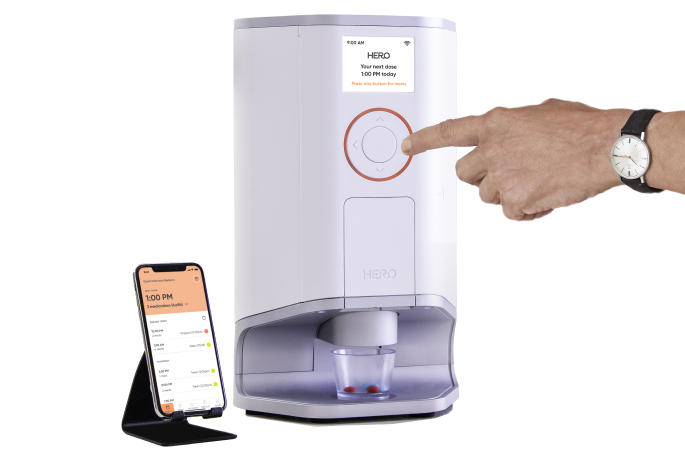12 tips for long-distance caregivers

About the author: Elizabeth B. Miller is a family caregiver, Certified Caregiving Consultant, and founder of Happy Healthy Caregiver.
Since the inception of the Academy Awards in the late 1920s, only five films have won for both Best Actor and Best Supporting Actor: Going My Way (1944), The Best Years of Our Lives (1946), Ben-Hur (1959), Mystic River (2003), and Dallas Buyers Club (2013). These award-winning movies demonstrated exceptional team effort between the lead role and the supporting actor.
On every care team, we have our lead actor (the primary family caregiver) and our supporting actors (our long-distance caregivers). Just like an award-winning movie provides more lines for the lead actor, the primary caregiving role undertakes more responsibilities. Meanwhile, the key for the supporting figures is how you show up to be a part of the picture.
Over my caregiving years, I’ve taken on the roles of both the primary and long-distance family caregiver. A long-distance caregiver, as defined by the National Institute on Aging, is someone who lives an hour or more away from the person who needs care. While I was lucky to have sibling support, many other caregivers run a solo operation and have to work harder to assemble their care team.
Just because you aren’t physically close to a care recipient and primary caregiver, doesn’t mean high-quality assistance and support can’t be offered. Here are a few things you can do for both the care recipient and the primary caregiver to provide a helping hand.
5 ways to help your care recipient from a distance
Whether you can offer time or money (or both!), any assistance is appreciated when providing care for a loved one. Here are some ways to share the care:
Summarize research related to a disease, treatment plan, insurance coverage, senior living center, or a specific area of concern. If your employer has an Employee Assistance Program, they can often offer expertise in these areas (even if your loved one doesn’t live with you).
Identify and interview local resources for home health services, home maintenance, housekeeping, and meal delivery. Contact your care recipient’s Area Agency on Aging (AAA) to obtain a list of available services. An AAA is a public or private non-profit agency designated by the state to address the needs of all older adults.
Offer financial assistance. Remove some financial burdens by hiring professional home care, lawn care, or housekeeping services. Or, offer to pay for Hero’s monthly membership service to help ease the burden of medication management and improve adherence.
Communicate with your loved one. Regularly calling your loved one broadens the connection circle. Ask about your loved one’s day and share the details of yours. Here’s a list of questions to ask to keep the conversation going. Any phone time is a win/win for both the care recipient and the primary caregiver. The primary caregiver can step away for a few minutes to complete a task or have some time for themselves, knowing the person needing care is in good hands.
Send snail mail and small gifts. Whether handmade or store-bought, my mom never tossed a greeting card - clear evidence of how much value she placed on these small tokens of affection. Adding photos or homemade artwork inside your card adds a great personal touch. Regular subscription boxes also make for a wonderful gift idea. We’ve tried ones specifically made for older adults, including cozy blankets, bird feeders, art kits, and card games. One box included a variety of healthy snacks; Mom would sort out what she wanted and put the rest in a basket for the visiting professional caregivers and hospice staff.
7 ways to show long-distance support for the primary family caregiver
While you can certainly ask the primary caregiver how you can help, they may be just too immersed in their role and not have the time or energy to step away to delegate the responsibilities. In these circumstances, the ideas below can help a primary caregiver feel more supported.
Order meals to be delivered through DoorDash or UberEats. Everyone has to eat multiple times a day! Providing an occasional dinner offers the caregiver a break and time to do something for themselves. Keep a list of their favorite restaurants and give them at least a day’s notice. Half of the fun is anticipating the break!
Establish a regular cadence for visits. Sharing how often you’ll stop by to provide a helping hand or relieve a primary caregiver of normal duties allows them to plan some time away. Create a proposed schedule with multiple family members and friends to spread out planned respite for the caregivers and avoid overlapping times.
Validate and affirm your primary caregivers through regular communication. Breathe energy into a primary caregiver’s day by sending greeting cards, texts, phone calls, Marco Polo video chats, custom playlists, or small gifts like these inserts to make a Caregiver Jar. Caregivers often feel overwhelmed and isolated, and these thoughtful messages and treats are appreciated.
Identify local support group options. Try searching online for available services in the primary caregiver’s area. Use key search words like ‘caregiver support group + [caregivers city]’ and share the following available meeting times. You can also find online support groups for family caregivers.
Create a system for recurring tasks. For example, my mom liked to send out birthday cards to her children and grandchildren. I developed a simple solution by purchasing an accordion file folder with monthly pockets and pre-bought birthday cards for all the family members. Then, I addressed the envelopes, so all my sister would need to do is ask mom to sign the card and drop it in the mailbox. Other recurring task examples include bill paying or tax preparation.
Nominate your primary caregiver for available respite. Two national organizations that offer complimentary respite services are No Barriers Caregivers and HFC. Local respite options may also be available.
Research if the primary caregiver qualifies to get paid for caregiving hours. Some states have programs to fund or reimburse family caregivers. Contact the primary caregiver’s local Area Agency on Aging to inquire.
Instead of saying to a family caregiver, ‘let me know how I can help,’ it’s best to offer assistance in specific ways. Hopefully, the dozen examples shared above will better arm you with actionable ways to share the care, no matter if you are across town or across the globe.
Complex med schedule? We solved it.
Hero’s smart dispenser reminds you to take your meds and dispenses the right dose, at the right time.

The contents of the above article are for informational and educational purposes only. The article is not intended to be a substitute for professional medical advice, diagnosis, or treatment. Always seek the advice of your physician or other qualified clinician with any questions you may have regarding a medical condition or its treatment and do not disregard professional medical advice or delay seeking it because of information published by us. Hero is indicated for medication dispensing for general use and not for patients with any specific disease or condition. Any reference to specific conditions are for informational purposes only and are not indications for use of the device.



